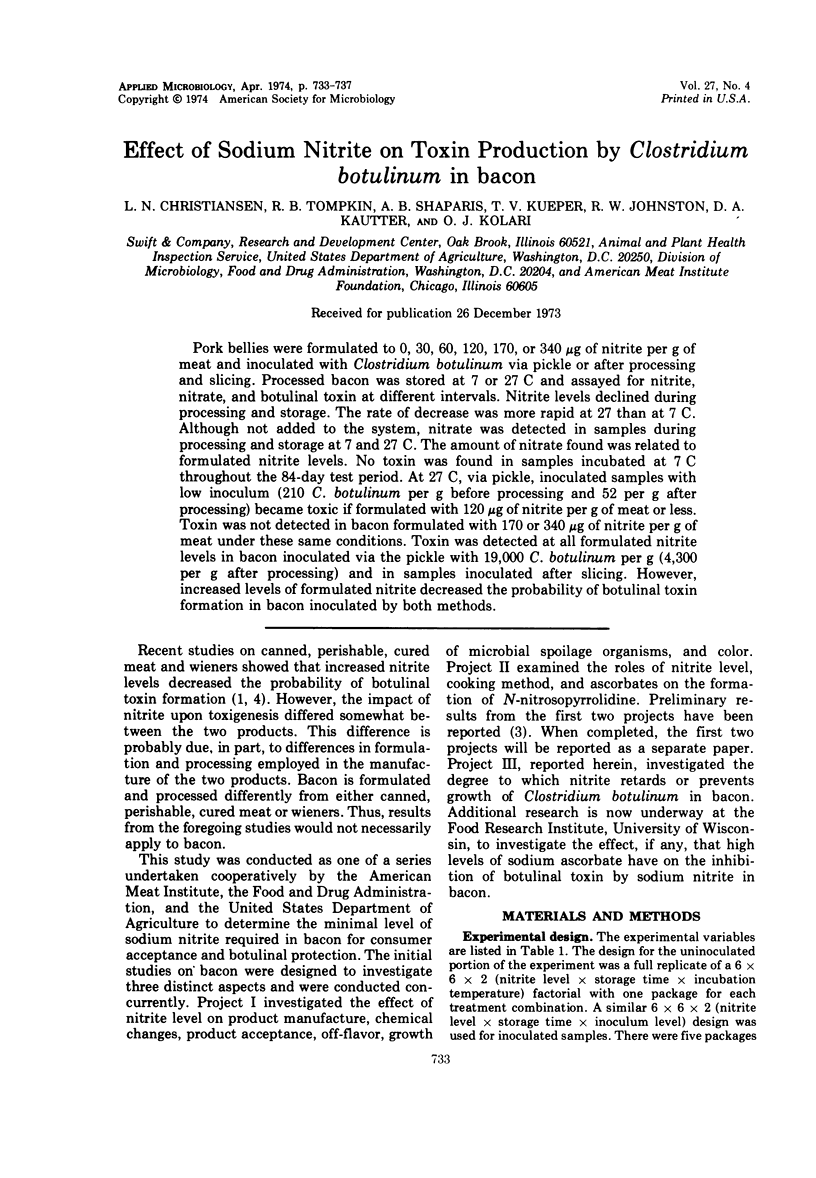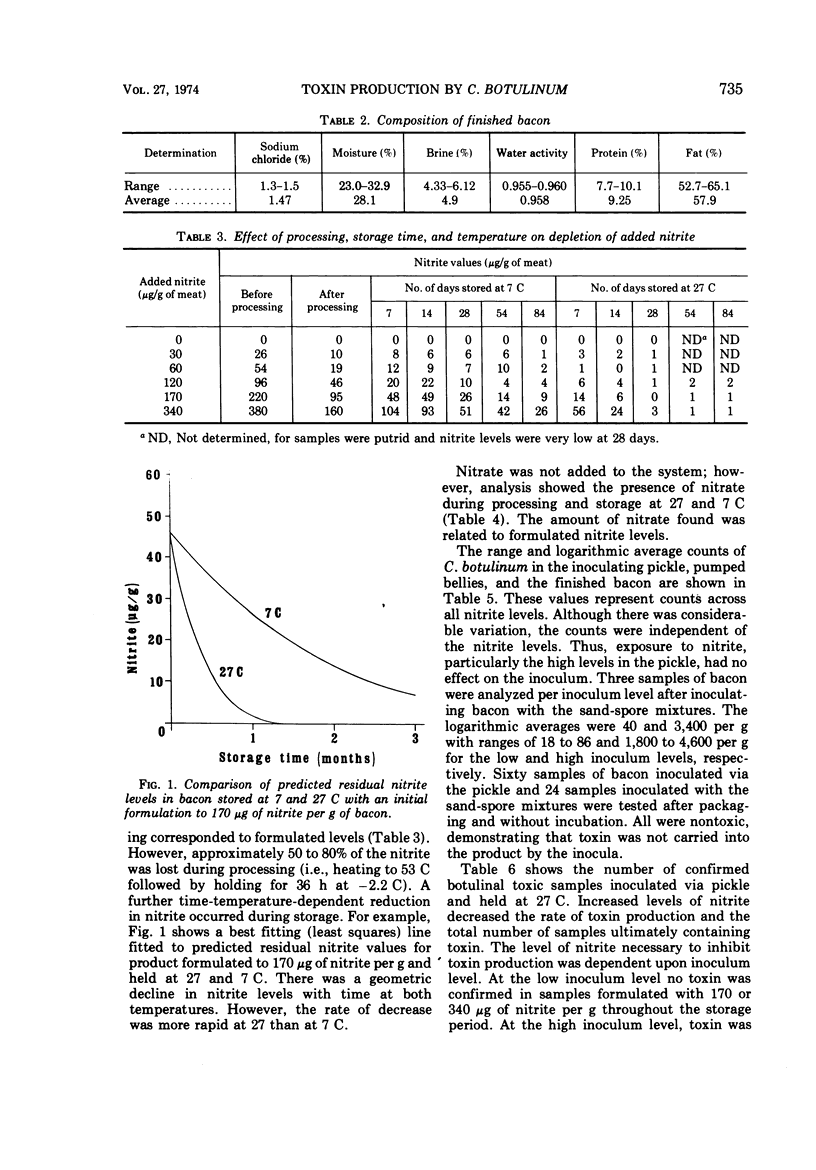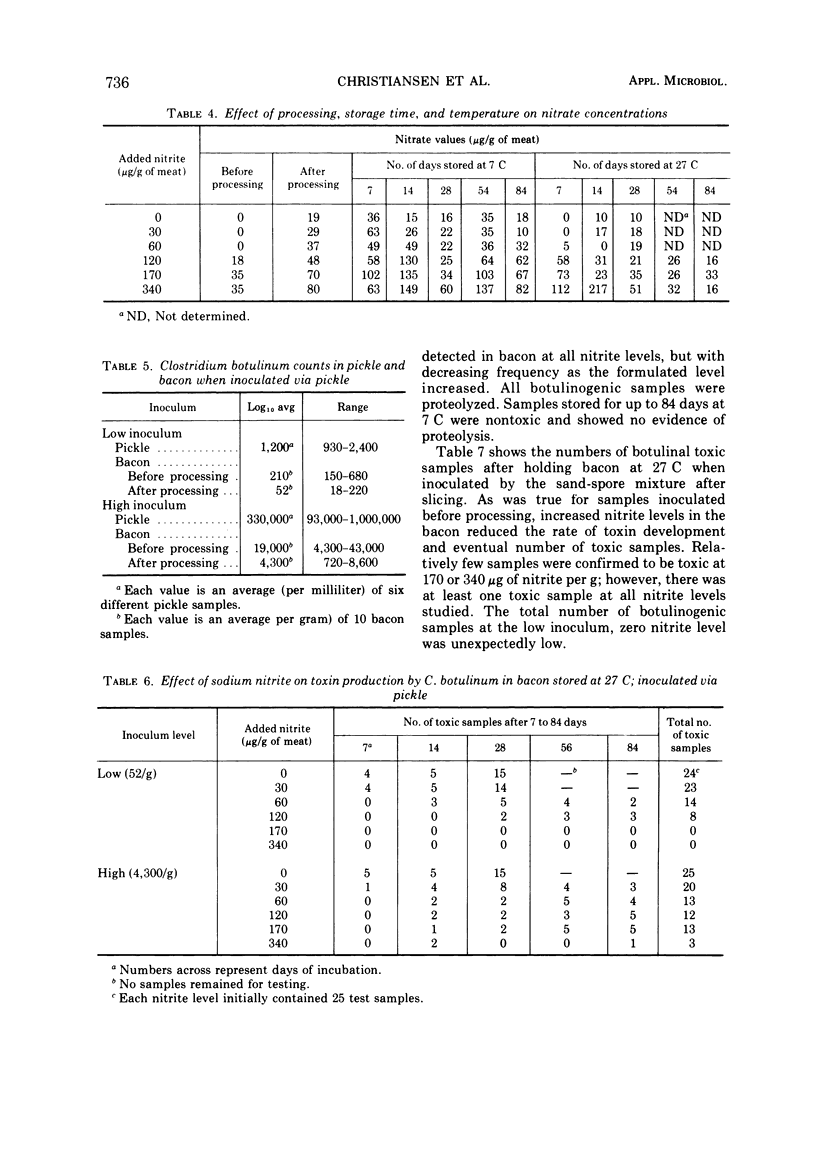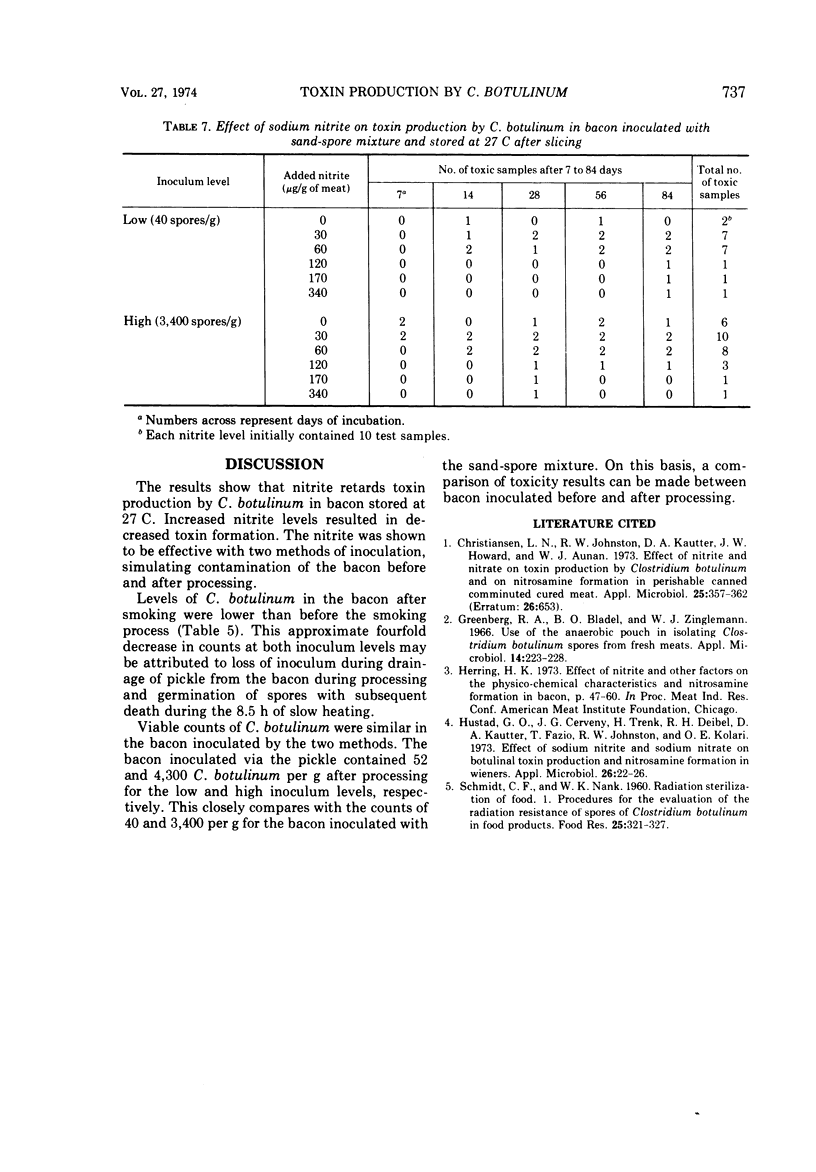Abstract
Pork bellies were formulated to 0, 30, 60, 120, 170, or 340 μg of nitrite per g of meat and inoculated with Clostridium botulinum via pickle or after processing and slicing. Processed bacon was stored at 7 or 27 C and assayed for nitrite, nitrate, and botulinal toxin at different intervals. Nitrite levels declined during processing and storage. The rate of decrease was more rapid at 27 than at 7 C. Although not added to the system, nitrate was detected in samples during processing and storage at 7 and 27 C. The amount of nitrate found was related to formulated nitrite levels. No toxin was found in samples incubated at 7 C throughout the 84-day test period. At 27 C, via pickle, inoculated samples with low inoculum (210 C. botulinum per g before processing and 52 per g after processing) became toxic if formulated with 120 μg of nitrite per g of meat or less. Toxin was not detected in bacon formulated with 170 or 340 μg of nitrite per g of meat under these same conditions. Toxin was detected at all formulated nitrite levels in bacon inoculated via the pickle with 19,000 C. botulinum per g (4,300 per g after processing) and in samples inoculated after slicing. However, increased levels of formulated nitrite decreased the probability of botulinal toxin formation in bacon inoculated by both methods.
Full text
PDF




Selected References
These references are in PubMed. This may not be the complete list of references from this article.
- Christiansen L. N., Johnston R. W., Kautter D. A., Howard J. W., Aunan W. J. Effect of nitrite and nitrate on toxin production by Clostridium botulinum and on nitrosamine formation in perishable canned comminuted cured meat. Appl Microbiol. 1973 Mar;25(3):357–362. doi: 10.1128/am.25.3.357-362.1973. [DOI] [PMC free article] [PubMed] [Google Scholar]
- Greenberg R. A., Bladel B. O., Zingelmann W. J. Use of the anaerobic pouch in isolating Clostridium botulinum spores from fresh meats. Appl Microbiol. 1966 Mar;14(2):223–228. doi: 10.1128/am.14.2.223-228.1966. [DOI] [PMC free article] [PubMed] [Google Scholar]
- Hustad G. O., Cerveny J. G., Trenk H., Deibel R. H., Kautter D. A., Fazio T., Johnston R. W., Kolari O. E. Effect of sodium nitrite and sodium nitrate on botulinal toxin production and nitrosamine formation in wieners. Appl Microbiol. 1973 Jul;26(1):22–26. doi: 10.1128/am.26.1.22-26.1973. [DOI] [PMC free article] [PubMed] [Google Scholar]


